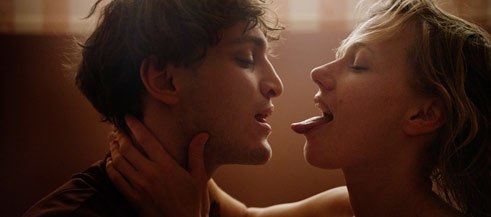Independent film production
German filmmakers Explore New Avenues

In the eyes of many a foreign director, the conditions for filmmaking in Germany are ideal, given the wide range of available sponsors and subsidies. And yet more and more German filmmakers are exploring new avenues – off the beaten track of traditional fundraising and conventional cinema – and with success.
Love Steaks, a feature film by Jakob Lass, was independently produced on a shoestring budget at the Hochschule für Film and Fernsehen Konrad Wolf (HFF, College of Film and Television) in Babelsberg, Potsdam. It has garnered a number of national and international awards and has even been nominated for the most prestigious German award of all, the Deutscher Filmpreis (aka the Lola Awards) – alongside productions with multi-million euro budgets. It was made possible by funding from various sponsors, but above all through the spirit of Fogma.
Fogma: tapping collective potential
Fogma is an independent filmmaking movement and manifesto drawn up and consistently practised by a group of filmmakers in their own productions. Their manifesto is a commitment to freedom (“Fogma is an experiment for freedom”) and quality (“Fogma does not allow any pseudo-professionalism”). Love Steaks, the first Fogma film, was shot entirely unscripted – though with a collectively developed vision and a style of directing that consistently adhered to that vision. A mix of improvisation, documentation and fiction, it was produced during normal working hours. “We stopped every day after eight hours of shooting,” explain producers Ines Schiller and Golo Schultz. For: “Fogma is filmmaking and living”.Mengamuk Films: wild and passionate commitment
Like Fogma, Michel Balagué and Marcin Malaszczak reject prefab aesthetic and dramaturgical recipes. “We conceive of film as an art form and as an instrument of aesthetic resistance. We seek to collaborate with filmmakers and artists who wish to help develop this new art form, who believe art must spring from an independent spirit and must be wildly and passionately committed to something,” is the credo of Mengamuk Films.Nearly all Mengamuk productions to date have come from outside the established system of German film subsidies. How was this possible? “We’re not conventional coproducers who put up the funding from our own country: we get personally involved in each and every film. Concretely, that means we contribute our creative competence. We have our own editing facilities, for example, and can handle colour correction as well,” says Balagué. “We want to create a place that enables us to produce films as independently as possible with our own infrastructure. Our aim is to remain flexible – which, however, does not rule out applying for German film subsidies sometimes too,” adds Malaszczak.
This is how coproductions with filmmakers from Belgium, Jordan and Poland, for example, have come about so far. Like Malaszczak’s own film Sieniawka (which won the FID Marseille award for Best Debut Film and the Arte Documentary Film Prize), all of them have won a number of awards. The prize money has been consistently shared out among the partners and ploughed back in to fund the next projects.
Alternative distribution and viewing models
Independent filmmakers are also pinning their hopes on new approaches to distribution, especially online. But that is not always a simple matter. In association with the online distributors Daredo, for example, the Fogma team came up with a new idea for the distribution of Love Steaks, which was produced without any funding from television or distributors. In parallel to its theatrical release, the idea was for the participating 20 cinemas to post the picture on their own websites for pay-to-view online streaming. However, shortly before the launch, the German association of arthouse cinemas decided against this streaming model.But new forms of cinema that involve the viewing audience in exchange and discussion are also a burgeoning trend. Verena von Stackelberg, a freelance programme planner and film curator, would like to create such a venue in Neukölln, Berlin. Her interdisciplinary cinema project is called Wolf: “A different brand of cinema must create a festival atmosphere in its daily operation. It must provide a venue people go to for the sake of communication. It must highlight cinema’s function as a cultural locus, as a place of exchange. It must combine café, exhibition and film culture, providing a public venue that gives new meaning to the word ‘art house’, quite in its literal sense,” insists Stackelberg.
During 48 Hours Neukölln, a neighbourhood festival in Berlin, Wolf opened its doors for the first time in June 2014 with a whole programme of workshops and screenings. In 2015 two digital cinema auditoriums, as well as a bar and an exhibition room, were built on the premises of a former Berlin brothel and snack bar to provide a “home for cinema and cinematic art, for filmmakers and film enthusiasts”.
Verena von Stackelberg has no qualms about combining a movie theatre and streaming subscription. “This is a fairly untried way of retaining an audience. The future belongs to a cinema that’s open to the public’s curiosity and receptive to independence from the market, to the other arts and to new media.”